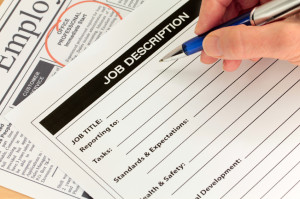 Hiring can be the most difficult aspect of running a business for most entrepreneurs. The hiring process is not clear, the onboarding non-existent, expectations rarely made clear, and the firing after it all goes wrong is the worst part of all. As with most anything, it’s a process and once you have a process that works for you, you increase the likelihood of success.
Hiring can be the most difficult aspect of running a business for most entrepreneurs. The hiring process is not clear, the onboarding non-existent, expectations rarely made clear, and the firing after it all goes wrong is the worst part of all. As with most anything, it’s a process and once you have a process that works for you, you increase the likelihood of success.
This month’s free download is Chapter 4 entitled “Hiring.” I describe the process that has worked for me and many of my clients so I encourage you to use it as a guidebook for creating your own process or upgrading the one you have.
Let’s start at the beginning – the job description. So often I see very lengthy, very detailed job descriptions that list out so many responsibilities that the person would have to be superman or woman to be successful and yet when I ask the CEO or hiring manager to tell me a time when this position was successful, they look at me and say, “well, never now that you mention it.”
That’s why I always start with the job description. It can tell you so much about the position, the company, and what their process is or isn’t. Let’s assume the position is really needed and you want to move forward on hiring. Hiring without a job description is like getting married without dating. It is like a box of chocolates – you never know what you’re going to get – according to the philosopher Forrest Gump. More importantly, how will you know if you have the right candidate without a job description?
The most important part of a good job description? Keep it simple. Typically, people don’t read beyond the first page, (just like in emails), so they scan for the relevant facts and assume they understand. Here’s what I believe makes a good job description:
- One or two lines of what success looks like for the position
- Job duties and responsibilities
- Required skills and characteristics
- Desired skills and characteristics
A one or two page description, (two pages for more senior positions if needed), that includes all of the above will go a long way toward selecting the right person. First, describe what success looks like, “this position will lead the sales team to achieve a 20% YOY growth goal while expanding into 3 new countries internationally.“ Now it’s very clear “what” you expect the position to achieve. Next you need about a paragraph to describe what the position actually does on a daily basis – the duties and responsibilities. You can also incorporate this into a success statement if you like.
The next two items are often confused. The first is “REQUIRED” skills, experience or characteristics – meaning, you will not hire someone without them. For example if you say someone has to have an advanced degree, you will not hire someone with a bachelors. You might require 5-10 years of relevant experience. This means that someone with 4 years would not qualify. It’s a good way to test what is really and truly required and what is desired. Remember that it’s hard to require and test for an “outgoing personality” unless you have a specific tool or way to measure personality characteristics.
The second piece is “DESIRED” skills, experience or characteristics. These might look like, “masters degree preferred” or work with a specific product or customer; or the number of people supervised. etc. It is your “perfect” candidate’s background. If you are lucky enough to have this person in-house now and they are leaving, create the description about them, or if you have the wrong person, be sure to include what this person lacked. Focus on successful behaviors and the results those produced.
After you’ve got it drawn up, have a few people both inside and outside look at it for a reality check – is it too ambitious? Does this person even exist? Is it clear? Remember, this is only the first step, but it’s a very important one. It’s so much easier and less expensive to take your time in the hiring process than to make a mistake by going too fast.
